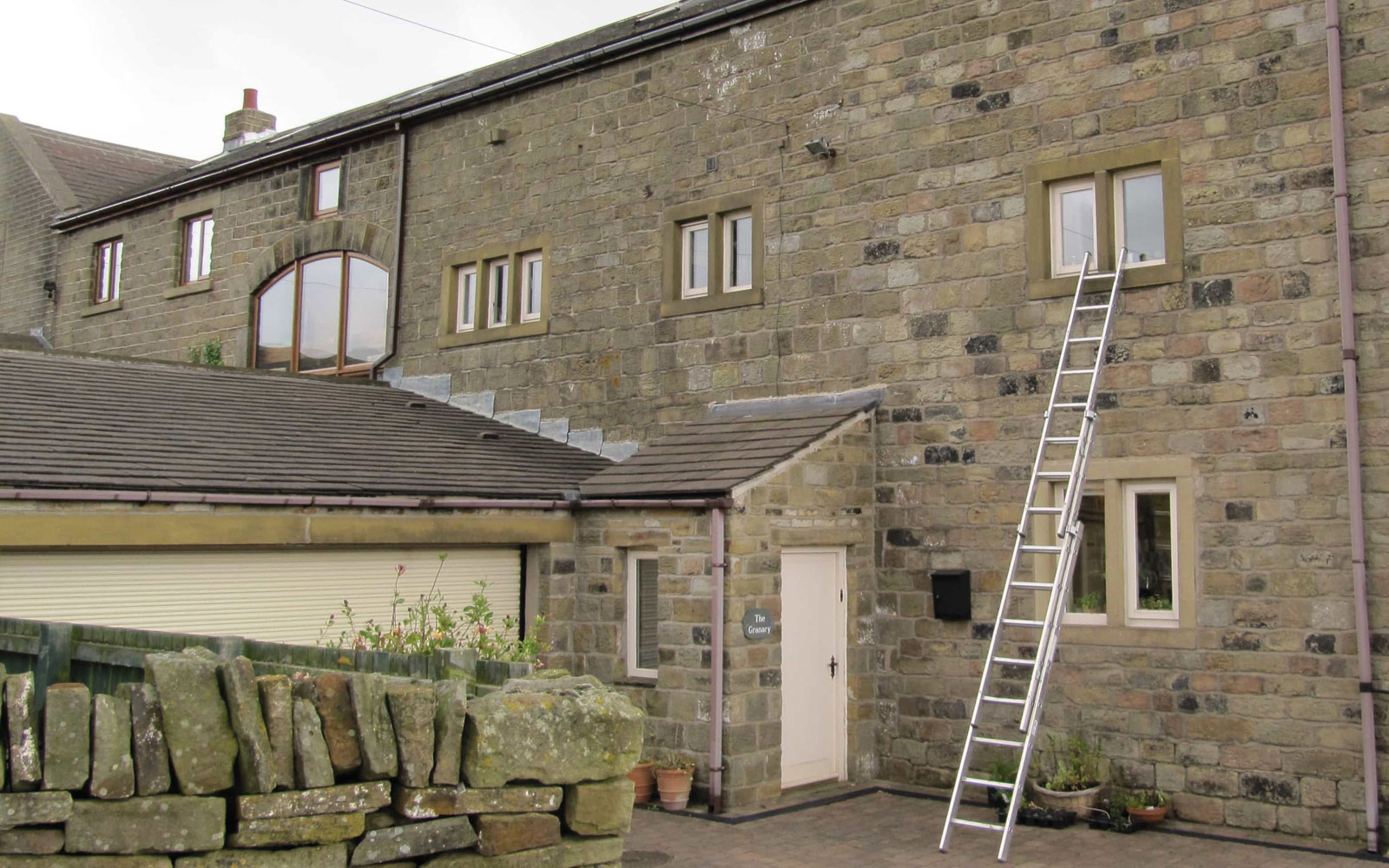Frost protection for MVHR systems

As the technology currently stands there are no mechanical ventilation recovery systems that can function with an out going temperature of below zero Celsius. The reason for which is as follows:
In winter as the outgoing warm humid air passes through the heat exchanger it drops below dew point forming condensation which flows from an outlet. If the intake air is below -10C then out going side of the heater exchanger will drop below zero and the condensation will start to form ice and block the narrow air ways. This usually takes around 1-2 hours of below -10C before the out going side is closed by ice. If the system is left running the heat exchanger no longer has the benefit of the warm air passing outwards and will simply freeze to the temperature of the incoming air flow.
To compound this issue water has a high latent heat. This means that to change ice back to water it require the same amount of energy as it takes to raise the same quantity of water from 0 to 800C, so as the intake air temperature rises above zero it still takes sometime for the ice to thaw.
There are several possible solutions to this problem. All the solutions use an energy source to raise the temperature in the heat exchanger to above the critical level.
The conventional mainstream units sense that the outside air temperature has fallen to a critical level and reduce the intake flow whilst maintaining the exhaust flow so as to have more heat in the exchanger. If the temperature continues to fall the intake will be turned off completely and the extract fan will continue to run. Referring back to the air tightness issues, plainly if the building is truly airtight this is a nonsense, you can not extract more air out of a building than is going in.
In the real world buildings are never completely airtight and the air has to come from somewhere. The air will be pulled in from where ever possible creating draughts and energy loss. The cold air being drawn in through unintended routes will cause cold spots, condensation and possible damage over the longer term to the building fabric. This will occur at the time when the maximum benefit of having invested in a low energy build should be being realised. In a very low energy building, the heating system may be too small to cope with this extra demand, resulting in sub-comfort conditions.
Particular requirements for frost protection to MVHR in low energy / Passivhaus buildings
In very low energy buildings such as those at or approaching the German Passivhaus standard, the design requirements for Comfort Ventilation are a little different from other buildings. It is very important that these different requirements are fully understood by the system designer, as without this understanding the system will potentially not function correctly. Passivhaus certification specifically excludes the form of frost protection out lined above.
There are three main alternative solutions for advanced buildings.
PTC electrical resistance pre-heater
The simplest solution is to put a PTC electrical resistance pre-heater on the intake controlled by a thermostat. PTC stands for Positive Temperature Co-efficient and means that only the sufficient heat is put in to the air to raise the temperature to just above zero. The advantages of this solution are that it is relatively cheap and simply to install. The disadvantage is that it uses electrical energy which is relatively expensive.
Ground to air heat exchanger
Alternatively the intake air can be drawn in through a ground to air heat exchanger, also known as a ground pipe. This usually takes the form of a 20 – 40 meter length of 200mm diameter polypropylene pipe, laid at 1.5 – 2 meters depth and with a minimum 2% fall, so that condensation when it forms runs to an outlet or gulley. Laid at that depth the ground has a year round temperature of between 8 to 120C. The energy source here is solar.
The advantages of this system are that it helps stablise the building temperature by giving a moderate warming in winter and cooling in summer. It can be fitted in many circumstances with no moving parts (except when a sump pump is needed for the condensation). It can when appropriate be laid in the same trench as the foundations of the building. Running costs are only a minimal extra load on the ventilation unit fans. The disadvantages are the pipe must be laid very carefully. If a new trench has to be dug specially installation gets expensive. Some sites/ground conditions make it impracticable. Some people have expressed concerns regarding microbial growth in the pipe (e.g. mould) though I have seen no evidence for this.
Ground to brine to air heat exchanger
The ground to liquid to air heat exchanger system uses a small bore polypropylene pipe laid in the ground at a depth of 1.5 – 2 meters filled with anti-freeze solution (usually glycol). This again is using solar heat. The liquid is circulated through a duct heater when required to pre-heat (or cool) the intake air. The advantages of this system is that it is simpler to install. It is easy to turn on and off and does not have the issues of possible microbe growth. The disadvantages are that it requires energy to run albeit less than PTC electrical resistance heater but more than the ground pipe. It has moving parts that ultimately wear out. Though simpler that the ground pipe it still requires ground works and space for them.








